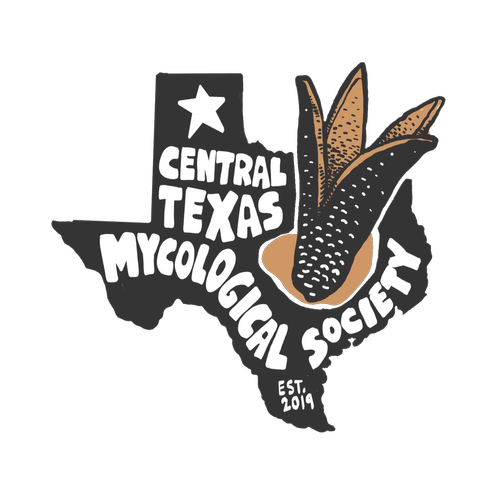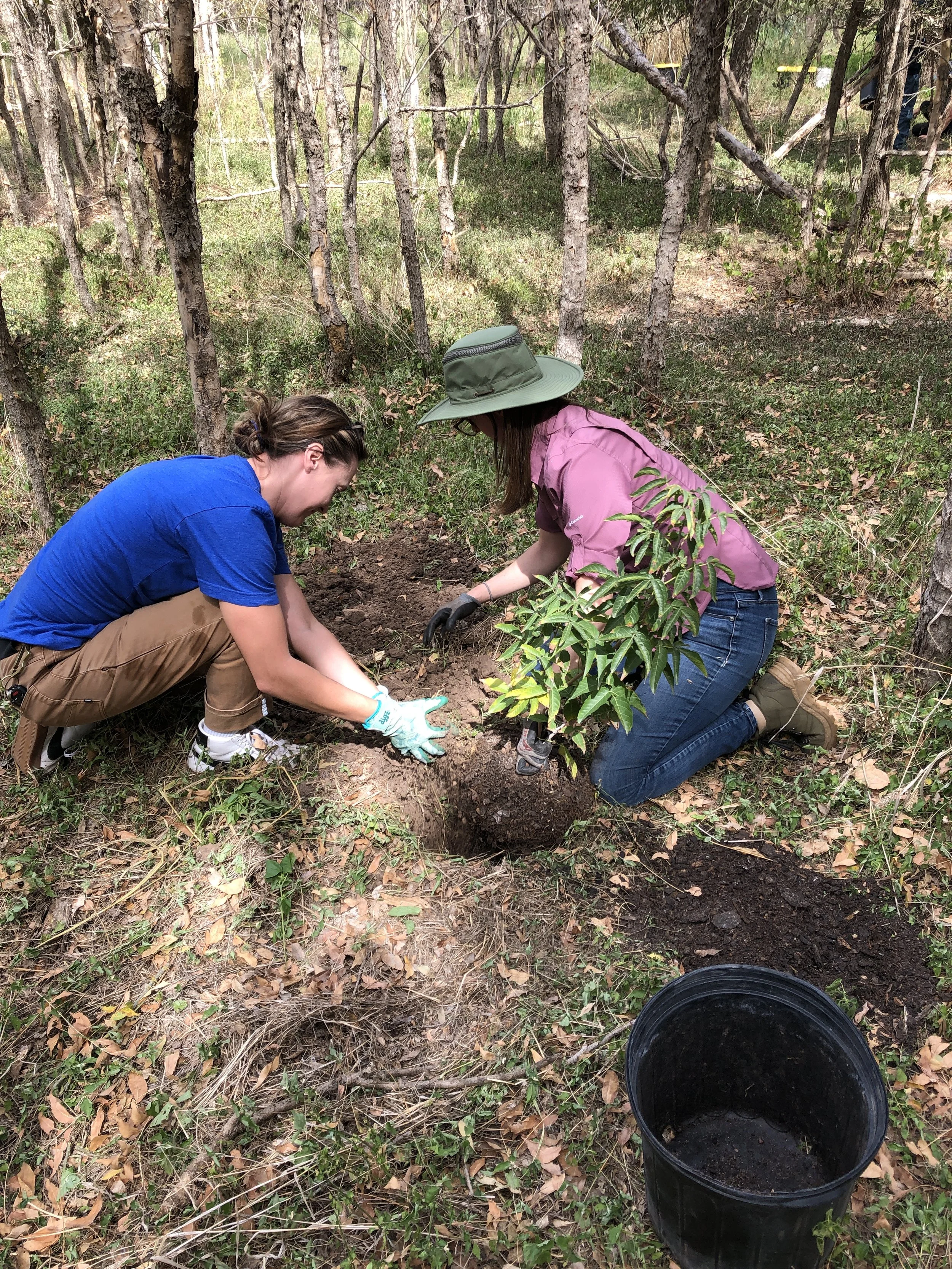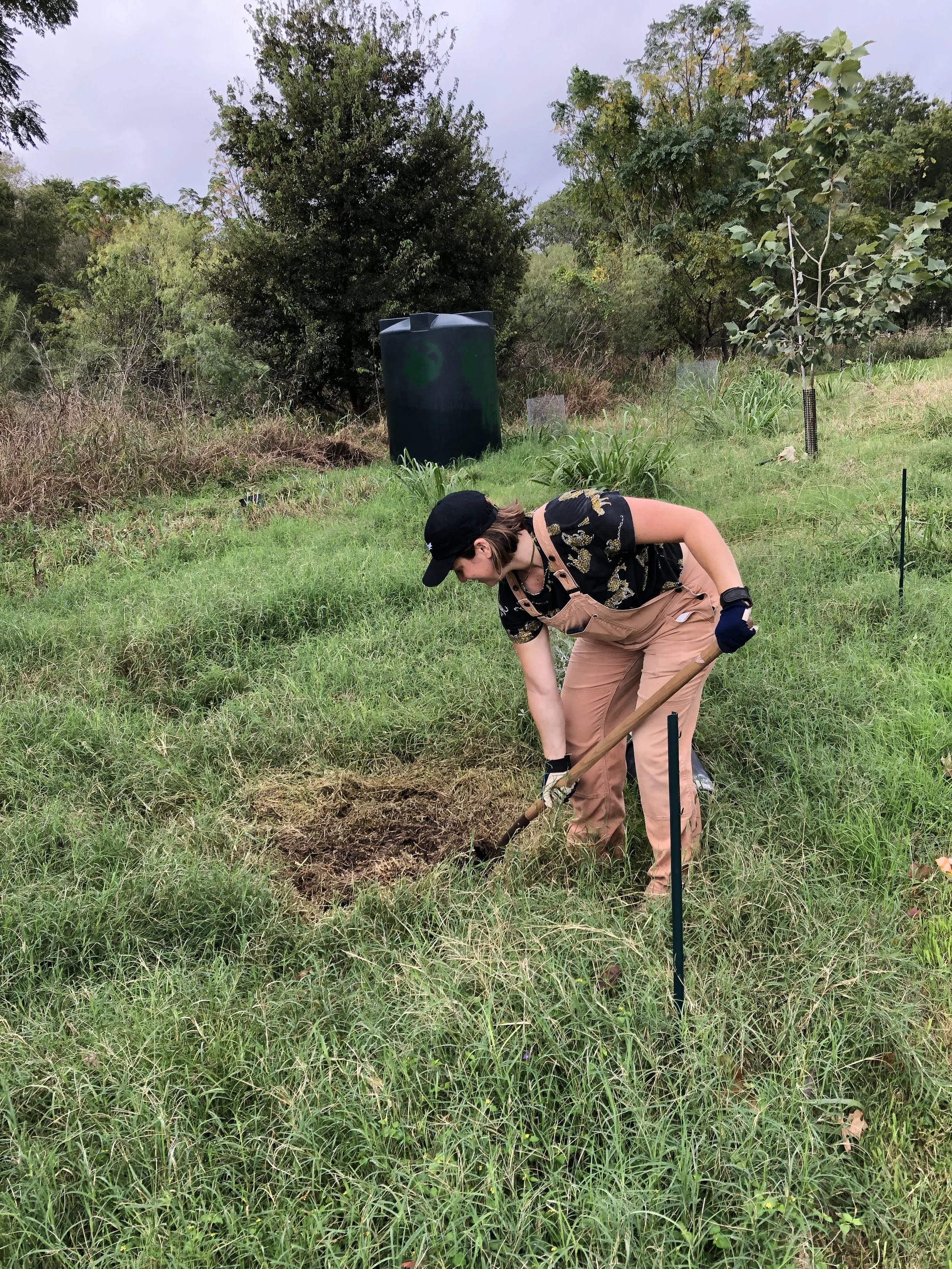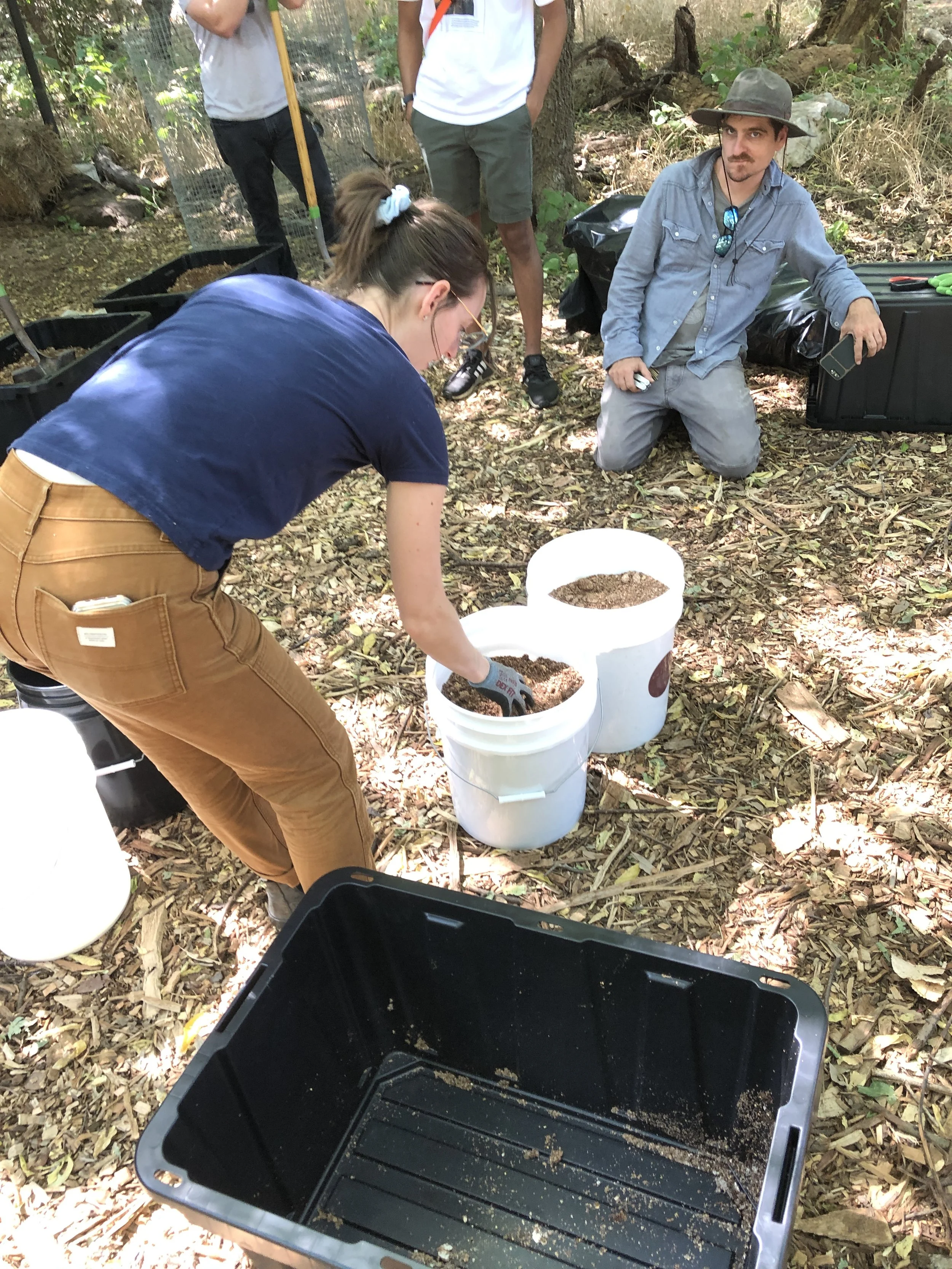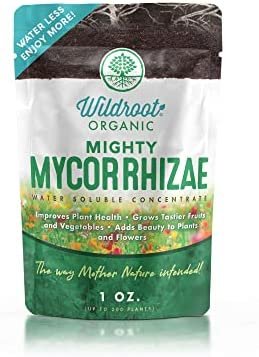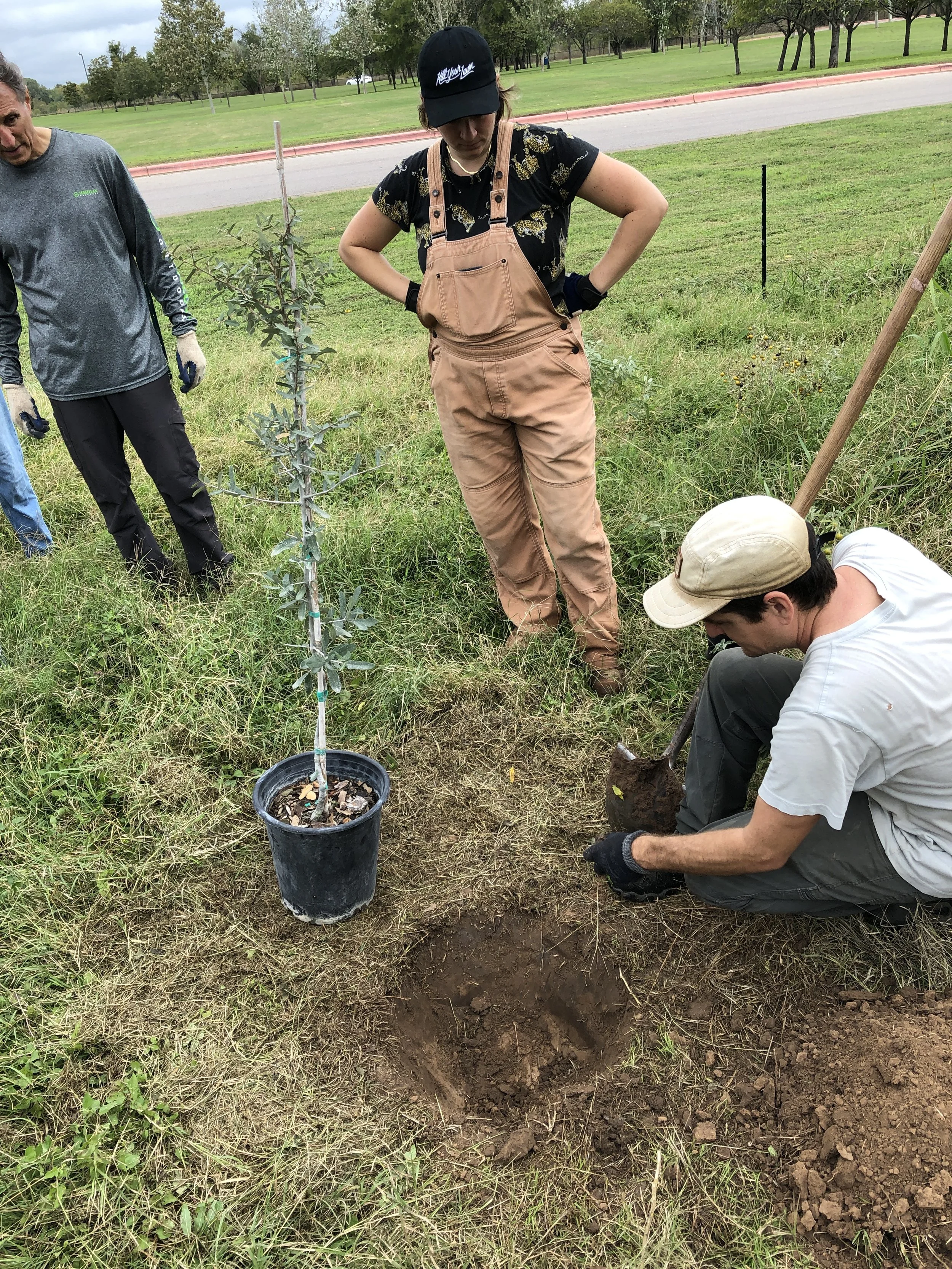Treatments: Myceliating Austin’s Urban Forest
In this project we’ve been experimenting with the effectiveness of two fungal treatments to enhance tree growth and resiliency. We are working with 3 common Tree Species that are a good fit for the Central Texas area, including:
Eve’s Necklace (Styphnolobium affine)
Mexican buckeye (Ungnadia speciosa)
Escarpment live oak (Quercus fusiformis)
Treatment A: Using Decomposer Fungi with Mulch
This treatment consists of wood mulch inoculated with saprophytic mushroom spawn reclaimed from local companies in Austin, Hi-Fi Mycology and Smallhold. Both companies produces “mushroom blocks” made from substrates such as straw, sawdust, soybean hulls, and wheat bran that are inoculated with fungal spores and used primarily for sale as culinary mushrooms at local markets. In this experiment we use Golden Oyster (Pleurotus citrinopileatus), Reishi (Ganoderma lingzhi) and Lion’s Mane (Hericium erinaceus) mushroom blocks that have already gone through at least 1 fruiting cycle.
To create the mulch inoculation treatment we evenly mixed 8 gallons of ground up mushroom block spawn with 25-30 gallons of lightly watered mulch. The mixture is placed into a 27 gallon plastic tote to allow for inoculation and spread of hyphae networks for 10-14 days. We kept the lid on top of the bin but did not close the lid fully to allow for airflow.
Treatment B: Using a Mycorrhizal Inoculant
Treatment B is an application of Wildroot Organic ® Mycorrhizal Inoculant. The Wildroot ® formula includes over 16 species of ectomycorrhizae and arbuscular (or endomycorrhizae) fungi. One scoop (~ 1 tablespoon) of the inoculant is added to 1 gallon of water and poured over the root area of the tree before planting into the ground. Species of fungi include:
Endomycorrhizae: Gloms intraradices, Gloms mosseae, Gloms aggregatum, Gloms etunicatum, Gloms monosporum, Gloms deserticola, Gloms Clarum, Paraglomus brasolianum, Gigaspor margarita
Ectomycorrhizae: Rhizopogon villosulus, Rhizopogon luteolus, Rhizopogon amylopogon, Rhizopogon fulvigleba, Pisolithus tinctorius, Scleroderma cepa, and Scleroderma citrinum
Map of where our test plots are located!
Community Science Method
Methodology for Treatments
To identify the most effective treatment, or combination of treatments, we developed a methodology consisting of 6 replicates of each tree species. This includes:
Control where nothing is added - the tree is planted directly into the ground.
Untreated Mulch is added to the perimeter of the tree trunk after planting.
A Mycorrhizal Inoculant is combined with water and poured over the root zone, and into the tree pit, followed by planting.
A Mulch and Mushroom Spawn mixture is added to the perimeter of the tree trunk after planting.
Untreated Mulch mixture is added to the perimeter of the tree trunk after planting, as well as a Mycorrhizal Inoculant combined with water is poured over the root zone, and into the tree pit, followed by planting.
A Mulch and Mushroom Spawn mixture is added to the perimeter of the tree trunk after planting, as well as a Mycorrhizal Inoculant combined with water is poured over the root zone, and into the tree pit, followed by planting.
Site: Circle Acres Nature Preserve (Austin, TX)
We are working with Ecology Action of Texas at Circle Acres Nature Preserve, a 10 acre site of wetland, forest, and grassland within the neighborhood of Montopolis in East Austin, Texas, managed by a non-profit organization Ecology Action of Texas. Circle Acres is an important part of the Colorado River Watershed ecosystem, and a habitat for over 150 bird species along with deer, turtles, and other wildlife.
This site has suffered a series of destructive uses: overfarming by early European settlers, quarrying, landfill, and illegal dumping site. It has been restored through the efforts of several organizations (including the Rhizome Collective and Ecology Action of Texas) along with hundreds of volunteer hours, and the regenerative power of nature. Ecology Action of Texas continues this restoration and preservation work through ongoing restoration, bioremediation, and conservation. The Montopolis neighborhood in East Austin includes diverse BIPOC communities (80.34%) with median household income (2019) ~30% lower than Austin’s average. (more needed here!)
